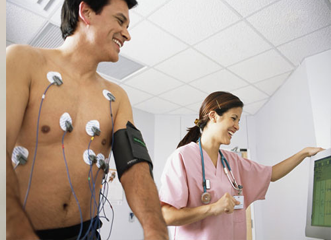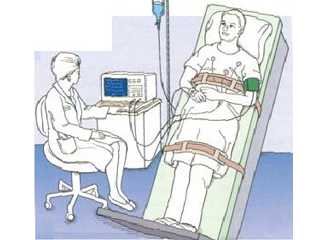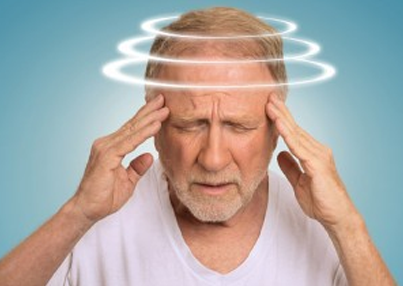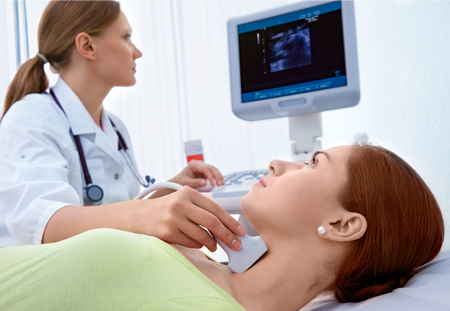Dizziness Clinic
Dizziness is a term stands for describing a range of sensations, such as feeling woozy, faint, weak or unsteady. Dizziness may occur in people of any age, but it is common among older adults. A fear of dizziness can make older adults to restrict or limit their physical as well as social activities. It can also result in falls and other injuries. However, dizziness hardly signals a life-threatening condition.


Treatment of dizziness depends more on the cause and the symptoms. It is generally effective, but the problems may recur.
Symptoms
Individuals experiencing dizziness can describe it as any of different sensations, such as:
- Feeling faint or lightheadedness
- A false sense of motion or spinning (vertigo)
- A feeling of floating, wooziness or heavy-headedness
- Unsteadiness or a loss of balance
These feelings may well be triggered or worsened by standing up, walking, or moving your head.
Dizziness can be caused by different reasons including inner ear disturbance, motion sickness and medication effects. Sometimes it occurs due to underlying health condition such as poor circulation, infection or injury. Main causes of dizziness related to heart and brain are:
Dizziness caused by heart diseases
- Heart attack
- Irregular heart rhythms (Arrhythmia), heart rate too fast or too slow
- Extremely high blood pressure
- Low blood pressure, which can have multiple causes including diseases of the heart, anemia, bleeding disorders, adverse reactions to medications
- Aged, weakened, or diseased heart muscles, toxins or drugs that affect the rate of force of the contractions of the heart
Dizziness caused by brain diseases
- Stroke, headaches, tumor, migraine
- Dementia or confusion
- Loss of decrease of blood supply to the brain, such as fainting
Other causes of dizziness
- Neurological conditions
- Anxiety disorder
- Low blood sugar
- Low iron levels
- Overheating and dehydration
Tests and Diagnosis
Speedy evaluation and treatment may be needed if doctors suspect a serious cause of dizziness. Our experts at MP Heart Clinic ask detailed questions and take a history in order to define the type of dizziness. The patients will also be given a detailed physical examination to further define likely causes.
Tests prescribed will be based on the diseases suggested by the patient’s history and results of the physical exam.
- In the emergency department at MP Heart Clinic, the patient may be placed on a heart monitor, ECG (electrocardiogram) may be performed along with other blood studies. Sometimes tests such as a CT scan or cardiac stress test may be suggested.
- A surgery can also be suggested to treat internal bleeding or hemorrhage, if this is the case for the symptoms.
- The patient may be sent to a physical specialist or hospitalized depending on the possible cause.
Holter
What is a Holter monitor?
A Holter monitor is a battery-operated portable device which performs traditional test which needs to check the heart rhythm. The device measures and tape record your heart’s activity (ECG) continuously for 24 to 48 hours.


The device is the size of a small camera and it has wires with silver dollar-sized electrodes which are attached to your skin.
The Holter monitor records your ECG as you keep doing your day to day activities and hence is also termed as ambulatory electrocardiograms.
Reason for wearing a Holter monitor
People wear a Holter monitor to let the doctor look at the heart’s activity at one point of the time during
ECG test. When the doctor wants to evaluate your irregular heartbeats called arrhythmias, Holter monitor is the best device to monitor your heart performance carried out during the whole day.
Holter monitor may provide useful information like
- whether medicines are working optimally or not.
- The device will be able to tell about the conditions such as dizziness, faintness, or the irregular rhythm of the Heart
- whether the Heart is getting desired oxygen required or not
Tilt Table Test
What is a tilt-table test?
A tilt-table test is a test recommended for people who often feel faint or lightheaded. In the test, you can lie on a table that is slowly tilted upward.
The test is useful to measure the blood pressure and heart rate respond to the force of gravity. The nurse or technician keeps a track of the blood pressure and the pulse rate.

 Why do people have tilt-table tests?
Why do people have tilt-table tests?
The
tilt table test is recommended to trigger your symptoms while watching you. It is method to measure your blood pressure and heart rate during the test to find out what’s causing your symptoms.
During the test if your average blood pressure stays stable the table tilts upward and your heart rate increases by a normal amount. If the blood pressure drops and stays low during the test, you may faint or feel lightheaded.
Preparation for Tilt-table test
The tilt table test procedure involve
- No drinking for at least 2 hours before the test.
- In case of a morning test, the doctor may tell you not to eat or drink after midnight.
- Medicine should be continued or not.
Time duration of a tilt-table test
Tilt table test may take around ninety minutes. The first part takes around 30 to 40 minutes. The second part takes around 40 to 50 minutes.
Orthostatic Hypotension
Orthostatic hypotension is also known as postural hypotension which is a form of low blood pressure that occurs when you stand up from sitting or lying down.
Orthostatic hypotension can cause dizziness or lightheadedness, and at times you can even faint.


Orthostatic hypotension is often for a very short duration, lasting only for few seconds to a few minutes after standing. But, long-lasting orthostatic hypotension can be a sign of more-serious conditions, so talk to your health practitioner if you frequently encounter lightheaded while standing up. It is highly recommended to see a doctor if you lose consciousness, even momentarily.
Symptoms
- Feeling lightheaded or dizzy after standing up
- Blurry vision
- Weakness
- Fainting (syncope)
- Confusion
- Nausea
Common Causes of Orthostatic Hypotension
- Aging
- Hypovolemia- a drop in the volume of blood
- Dehydration
- Excessive Bleeding
- Immobility (for example, staying in bed for a long time)
- Pregnancy
- Heart conditions
- Anemia
- Parkinson's disease
- Diabetic Conditions
- Hot weather
Diagnostic Tests
Carotid Ultrasound
Carotid ultrasound is a safe and painless procedure that uses sound waves in order to examine the
blood flow through the carotid arteries. Two carotid arteries are located on each side of the neck.
Carotid arteries deliver blood from the heart to the brain.


Carotid ultrasound usually tests for blocked or narrowed arteries, which may increase the risks of stroke. The results will help the doctor to determine a treatment to lower the stroke risk.
Why it’s done?
Carotid arteries are commonly narrowed by a buildup of plaque- made of fat, calcium, cholesterol and other substances that circulate in the bloodstream. Early diagnosis of a narrowed carotid artery can decrease the risks of stroke.
A doctor often recommends carotid ultrasound if a person has transient ischemic attacks (TIAs) or certain types of strokes. It may also be recommended if the person has medical conditions that increase the risks of stroke, including:
- Diabetes
- High Blood Pressure
- High Cholesterol
- Family history of stroke
- Abnormal sound in carotid arteries
- Recent transient ischemic attack (TIA) or stroke
- Coronary Artery Disease
Other uses of carotid ultrasound
A doctor may order a carotid ultrasound for:
- Evaluating blood flow through the artery after surgery to remove plaques
- Evaluating the placement and effectiveness of a stent, a mesh tube used to improve the blood flow through artery
- Locating a collection of clotted blood that may prevent the blood flow
- Detecting other carotid artery abnormalities that may disrupt the blood flow

 9818646277
9818646277




 Treatment of dizziness depends more on the cause and the symptoms. It is generally effective, but the problems may recur.
Treatment of dizziness depends more on the cause and the symptoms. It is generally effective, but the problems may recur. 
 The device is the size of a small camera and it has wires with silver dollar-sized electrodes which are attached to your skin. The Holter monitor records your ECG as you keep doing your day to day activities and hence is also termed as ambulatory electrocardiograms.
The device is the size of a small camera and it has wires with silver dollar-sized electrodes which are attached to your skin. The Holter monitor records your ECG as you keep doing your day to day activities and hence is also termed as ambulatory electrocardiograms. 
 Why do people have tilt-table tests?
Why do people have tilt-table tests?
 Orthostatic hypotension is often for a very short duration, lasting only for few seconds to a few minutes after standing. But, long-lasting orthostatic hypotension can be a sign of more-serious conditions, so talk to your health practitioner if you frequently encounter lightheaded while standing up. It is highly recommended to see a doctor if you lose consciousness, even momentarily.
Orthostatic hypotension is often for a very short duration, lasting only for few seconds to a few minutes after standing. But, long-lasting orthostatic hypotension can be a sign of more-serious conditions, so talk to your health practitioner if you frequently encounter lightheaded while standing up. It is highly recommended to see a doctor if you lose consciousness, even momentarily.
 Carotid ultrasound usually tests for blocked or narrowed arteries, which may increase the risks of stroke. The results will help the doctor to determine a treatment to lower the stroke risk.
Carotid ultrasound usually tests for blocked or narrowed arteries, which may increase the risks of stroke. The results will help the doctor to determine a treatment to lower the stroke risk.
Follow Us On: